
- News
- Basics
- Products
- JP Job shop
- Exhibition
- Interview
- Statistic
- PR
- Download
- Special contents
Basics
March 24, 2022
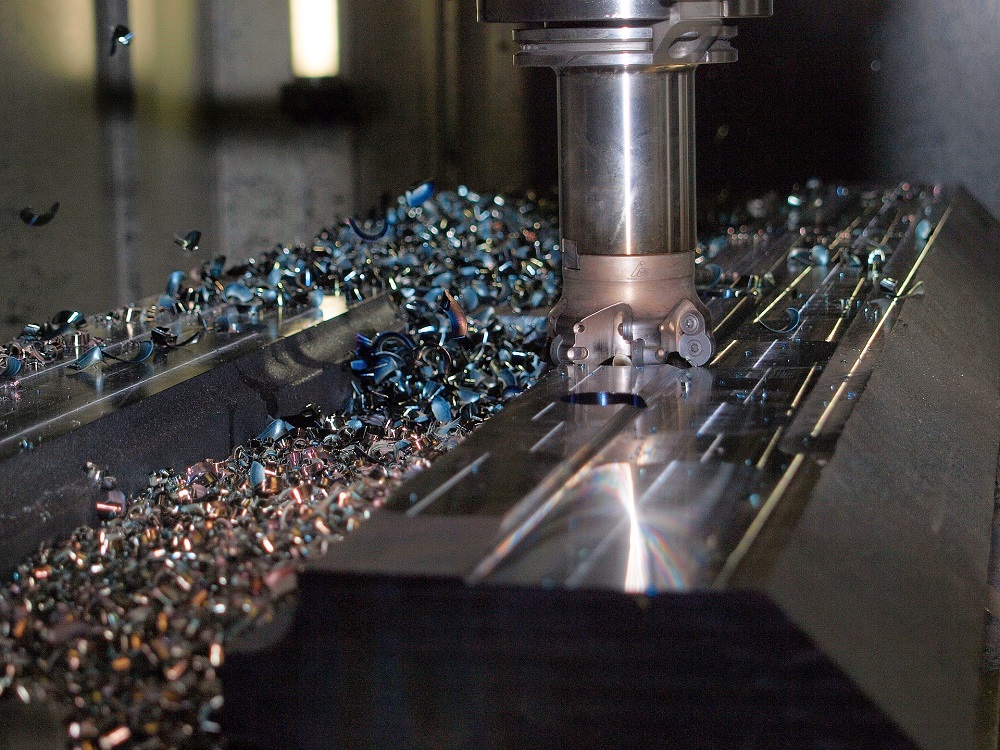
Contents:
1-2. The Japanese machine tool industry
2. Properties of machine tools
3. Main machining methods and machine tools
3-1. 3 types of machining methods
3-2. Cutting
3-3. Grinding
3-4. Special processing
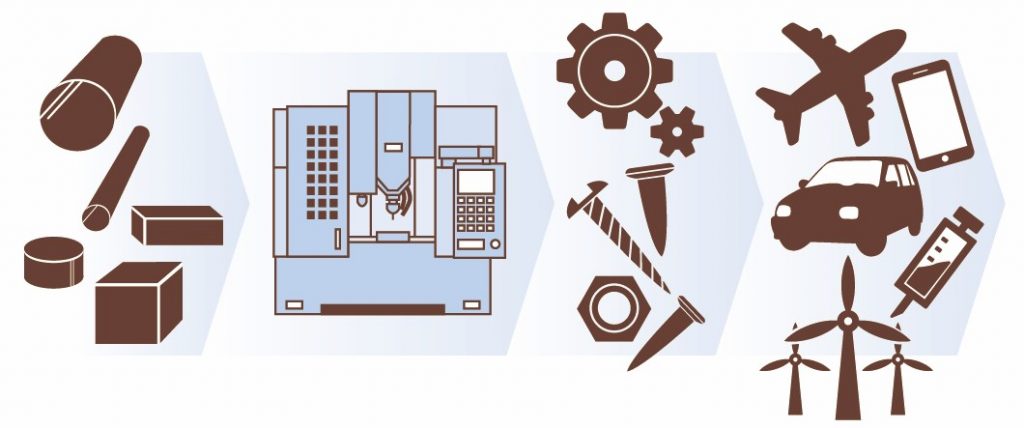
Materials are turned into machine parts by machine tools and then into final products.
Key Points
・ Machine tools are sometimes called “mother machines” since the machines produce various parts for other machines.
・ Japan’s machine tool technology is world-class.
・ There are various machining methods and corresponding machine tools.
1-1. Role of machine tools
We are surrounded by various machines such as cars, mobile phones, and cameras, and we use them every day as useful tools.
Automobiles, mobile phones, cameras, home appliances, medical equipment, aircraft and rolling stock are also types of machines, but what is the difference between these machines and machine tools?
Machine tools can produce a wide variety of parts for these machines. This is a feature unique to machine tools that is not found in other machines, and machine tools are also called “mother machines” in Japan.
Without machine tools, we would not be able to make parts for the machines that surround us, and we would not be able to enjoy the conveniences of modern life.
1-2. The Japanese machine tool industry

We have rare opportunity to see machine tools in our ordinary life. However, the performance and quality of the mother machine, the machine tool, determines the competitiveness of the final products produced by it. Therefore, the technological capability of machine tools has a significant impact on the national strength.
Japan has one of the world’s leading machine tool technologies. For 27 years since 1982, Japan was the world’s number one producer of machine tools; since 2009, China has taken the top spot, but Japan is still one of the world’s top producers of machine tools. Japan is known as a “manufacturing superpower,” and this is supported by its high level of machine tool technologies.
Machine tools are different from other machines, such as cars and mobile phones, in that they have the following four unique properties.
・ Machine tools are machines that make machines.
・ Copying principle holds true for machine tools.
・ Machine tools are based on rigid design.
・ Machine tools create a good cycle of “furthering progress by the products they themselves have created”.
Property 1 is, as described above, machine tools can produce parts of various machines as “mother machines”.
The copying principle in property 2 means that the accuracy of the parts produced by a machine tool is determined by the accuracy possessed by the machine tool.
As machine tools are built in such a way that the copying principle holds true, they can repeatedly produce parts with the same accuracy. In other words, the accuracy of parts produced by a machine tool cannot exceed the machining accuracy of the machine tool. Therefore, if you want to make parts with higher precision, you need a machine tool with higher machining accuracy.
Rigid design of property 3 is a design concept that is required of machine tools to realize the copying principle. Rigidity is an index of resistance to deformation against external forces, such as bending and twisting. Rigidity is an important aspect of machine tool performance.
The good cycle of property 4 refers to an autonomous growth cycle in which the performance of a machine tool is further improved by using the parts produced by the machine tool as elements of the machine tool.
3-1. 3 types of machining methods
There are three types of methods for machining metal materials and other materials: removal processing, forming and additive manufacturing.
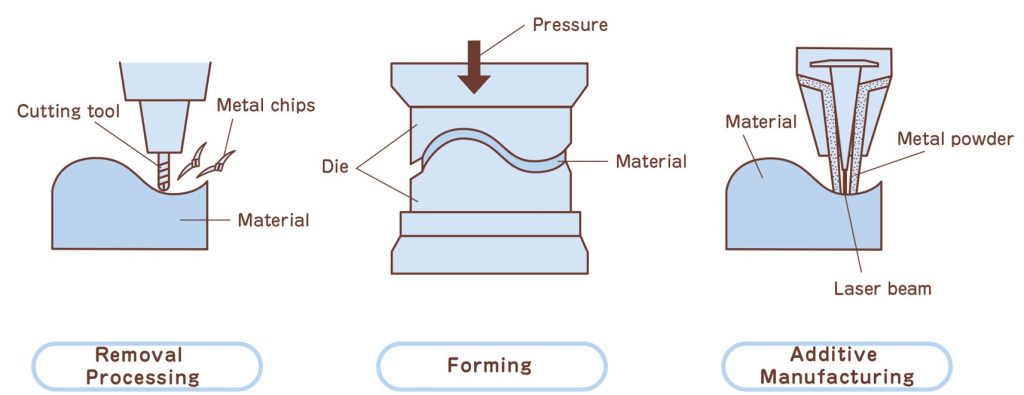
・ Removal processing
Removal processing is a processing method to remove unwanted parts, mainly from metal materials. There are a wide variety of removal processes, each of which has its own dedicated machine tool. Removal processing can be further subdivided into three types: “cutting”, “grinding”, and “special processing”.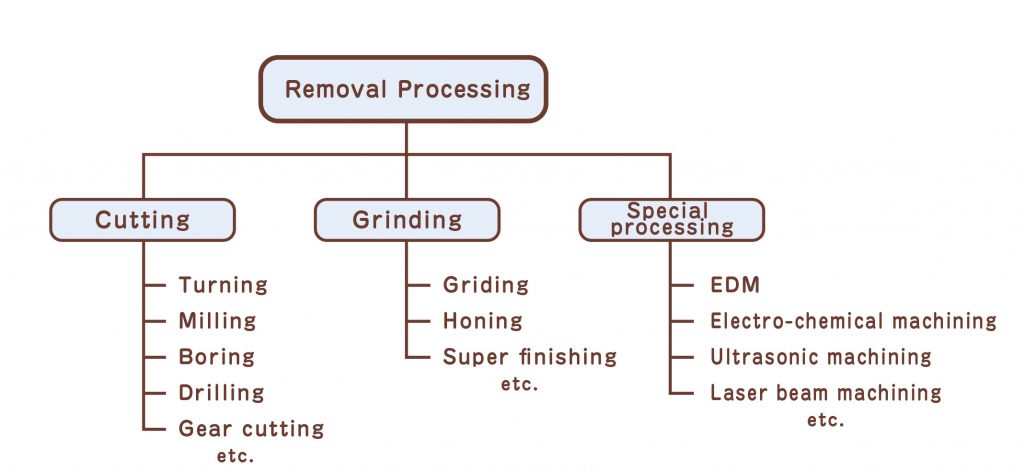
・ Forming
Forming is a process in which strong external pressure is applied to a metal material to change its shape. Typical processing methods include “plastic molding”, in which strong pressure is applied to a metal material using a die to deform its shape.
・ Additive Manufacturing
Additive manufacturing (AM) is a processing method in which metal and resin materials are piled up to create a three-dimensional shape. It is easy to understand when AM is thought of as a process where materials are added. A typical example is a 3D printer.
3-2. Cutting
Cutting is a process that uses a blade, called a cutting tool, to remove unwanted parts from a metal material. Cutting is the most major of the removal processes. Typical cutting processes include “turning”, “milling”, and “drilling”.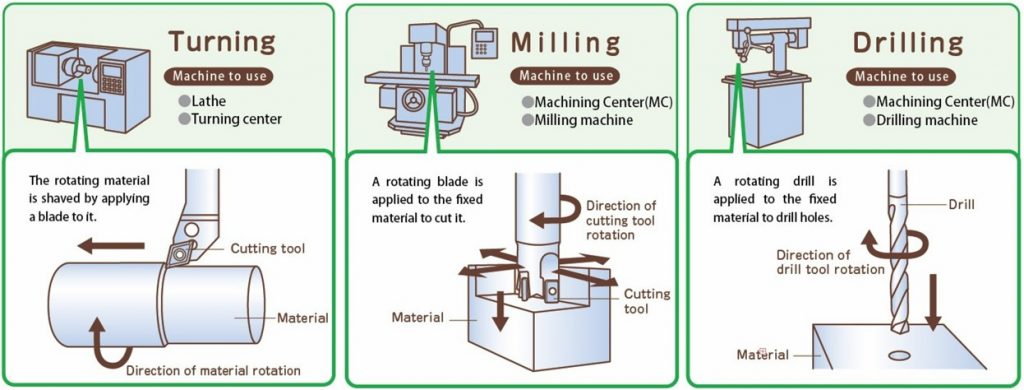
Turning is a machining process in which a cutting tool, called a tool bit, is pressed against a rotating workpiece to cut away the periphery. Cylinders and shafts are the major workpiece made by turning. Typical machine tools include lathes and turning centers.
Milling is a machining process that uses a rotating tool to cut a flat surface or groove in a workpiece fixed on a table. The main targets are plate- or block-shaped workpieces. Typical machine tools include machining centers and milling machines.
Drilling is a machining method that uses a drill to make a hole in a workpiece. Typical machine tools include machining centers and drilling machines.
3-3. Grinding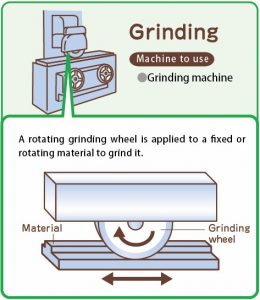
Grinding is a machining process that uses a grinding wheel to precisely finish a workpiece. Grinding is used to finish a workpiece that have been cut on a lathe or machining center to an even higher degree of precision. Typical grinding processes include “external cylindrical grinding”, “internal cylindrical grinding”, “centerless grinding”, and “surface grinding”.
3-4. Special processing
Special processing is a processing method that uses electrical energy or light energy to remove unwanted parts from a workpiece, instead of using cutting tools or grinding wheels. Typical processing methods include “electric discharge machining” (EDM), which uses electrical energy, and “laser beam machining”, which uses the heat of laser light.
September 25, 2025